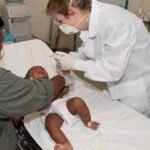
His Heart Ran Out of Power and He Fainted! Sick Sinus Syndrome is More Likely to Occur in the Elderly, and Its Treatment Relies on Heart Rate Regulators
Mr. Jones, a 72-year-old man, often fainted for no reason in recent days, and would wake up every few seconds, which made his family very worried. He went to the hospital to undergo an electrocardiogram and cardiac electrical physiological examination, and it was discovered that Mr. Jones suffered from sinus syndrome.
What exactly is sick sinus syndrome? Why does it cause fainting? We introduce you to the causes, symptoms and treatments of sick sinus syndrome.
What is sick sinus syndrome?
The beating of the heart is controlled by nerves and cardiomyocytes and changes speed according to the body’s needs. The electrical conduction of the heart starts from the sinoatrial node (SA node) of the right atrium, and sequentially passes to the atrioventricular node (AV node) and ventricle at the junction of the atrium and the ventricle, eventually causing the heart to beat. If there is a problem in any of these links, it may cause bradycardia and symptoms.
“Sick sinus syndrome” refers to abnormal function of the sinus node. The symptoms are usually bradycardia, that is, tachycardia, followed by a period of cardiac arrest (Tachy-brady syndrome) – —The heart stops beating completely, causing symptoms such as dizziness, weakness and fainting.
Main Cause of Sick Sinus Syndrome: Aging
Heart-related symptoms of sick sinus syndrome include:
- Sinus bradycardia
- Sinoatrial block (SA block)
- Sinus arrest
- Bradycardia-tachycardia syndrome
The cause is usually idiopathic degeneration of the sinus node due to aging, which is common in the elderly. Other possible causes include:
- Ischemic heart disease
- Rheumatic heart disease
- Myocarditis
- Connective tissue disease
- Cardiac trauma
- Infiltrating or dilated cardiomyopathy
- Infants and young children with congenital heart disease undergoing corrective cardiac surgery

Examination and diagnosis of sick sinus syndrome
Sick sinus syndrome can usually be diagnosed by taking a medical history and combining the following 2 examinations, and more than 90% of patients can be diagnosed:
- Electrocardiogram:
It shows a persistently slow heartbeat, less than 40 beats per minute, or the heartbeat stops for more than 3 seconds during the day. - Cardiac electrical physiological examination:
By inserting a detection catheter into the femoral vein or jugular vein to stimulate the rapid beating of the atrium, it is possible to determine whether the function of the sinoatrial node in causing the heart to beat is normal.
Sick Sinus Syndrome Treatment: Heart Rhythm Modulator
Sick sinus syndrome can also be said to mean that the heart is out of power, because the sinoatrial node that should discharge is not functioning normally, causing the heart to beat abnormally and arrhythmia; therefore, a heart rhythm regulator can be implanted to help the heart with an auxiliary discharge battery to return the heartbeat to normal.
Cardiac rhythm regulators are the main treatment for sick sinus syndrome, because drugs may cause some patients with sick sinus syndrome to develop symptoms such as supraventricular pulses, atrial flutter, or atrial fibrillation, and are only suitable for early control.
The cardiac rhythm regulator can almost completely restore sinoatrial node function, improve arrhythmia and related symptoms, and has low side effects and small wounds. Its battery can last for 7 to 10 years. Before the power is exhausted, patients only need to pay attention to the following three things. :
- Do not use medical equipment that vibrates or electrifies the body.
- Avoid placing mobile phones near the location where the heart rate regulator is installed.
- Avoid places with high voltage transformers, large electric motors, strong magnetic fields or radiated energy.












